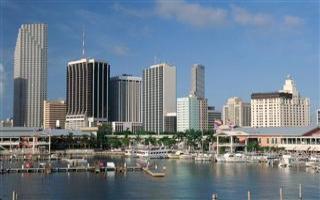
MIAMI, FL - Foreclosures and sales of other distressed properties pushed prices down further in January and lower prices spurred more sales, which are starting to shrink the number of existing homes for sale. But no bottom is in sight. That's the continuing story of South Florida's housing market, according to figures released Wednesday by the Florida Association of Realtors.
Existing home prices have now reached late 2002 levels and are getting ever closer to wiping away all of the price gains made during the housing boom.
The median price for existing single-family homes sold in Miami-Dade County fell to $208,100 in January, a decline of 38 percent compared to a year ago. In Broward County, median priced single-family homes went for $191,000, a 39 percent drop compared to January 2008. The median is the point at which half sell for more, and half for less.
In December 2002, the median price paid for a house stood at $211,000 in Miami-Dade and $209,000 in Broward, according to the statewide Realtor organization.
For condominiums, which the Florida Association of Realtors didn't track until 2006, prices fell sharply too. The median sales price for condos in Miami-Dade dropped 48 percent in January to $149,100. In Broward, a median-priced condo went for $85,000 in January, a 44 percent drop compared to the same period last year.
Banks have placed tighter lending standards on condos, making it harder for the sector to recover because of potential buyers' problems getting loans.
Market watchers are quick to caution that the Realtor group's numbers provide a broad snapshot and that home prices and sales trends may vary significantly in particular sub-markets such as Weston or Pinecrest.
''The recovery will be very neighborhood- and even building-specific,'' said Ronald Shuffield, president of Esslinger Wooten Maxwell, a residential brokerage that operates in South Florida.
In a positive sign, sales across South Florida were up compared to a year ago. The number of single-family homes sold in Miami-Dade and Broward counties were up about 50 percent compared to January last year. For condos, sales were up nearly 30 percent in each county.
The increased activity locally was in contrast to the national housing market, which saw both prices and sales drop. Home sales fell nationally by 9 percent in January compared to a year ago. The median price for all homes dropped 15 percent compared to January 2008, falling to $170,300.
Lawrence Yun, chief economist for the National Association of Realtors, said potential buyers hesitated in January because of ''so much stimulus package discussion,'' choosing to get a better understanding of the government's plans before making any buying decisions.
South Florida's increased sales activity is largely being fueled by banks selling homes that it has taken back from delinquent borrowers and from short sales - those where the lender allows a borrower to sell the home for less than is owed on the mortgage.
In January and December, for instance, 68 percent of the closings in Miami-Dade were either short sales or foreclosed properties. For condos, the number was 62 percent. More market activity has continued to shrink the excessive number of homes for sale, which is a key step for the market to recover.
Richard Barkett, chief executive of the Realtor Association of Greater Fort Lauderdale, has described what he calls ''the healing process'' this way: prices fall, sales rise, and surplus inventory is eaten up, resulting in a balance between buyers and sellers. The final step is price stabilization.
In January, the number of single-family homes with ''For Sale'' signs dropped 9 percent in Miami-Dade and 17 percent in Broward. For condos, the listings were down 10 percent in Miami-Dade and 14 percent in Broward.
In Miami-Dade, there is a 30-month of supply for single-family homes and a 3 ½ year supply for condos. For Broward, the recovery is a bit further along: a 21-month supply of houses and a 2 1/3-year supply of condos.
Source: MiamiHerald.com